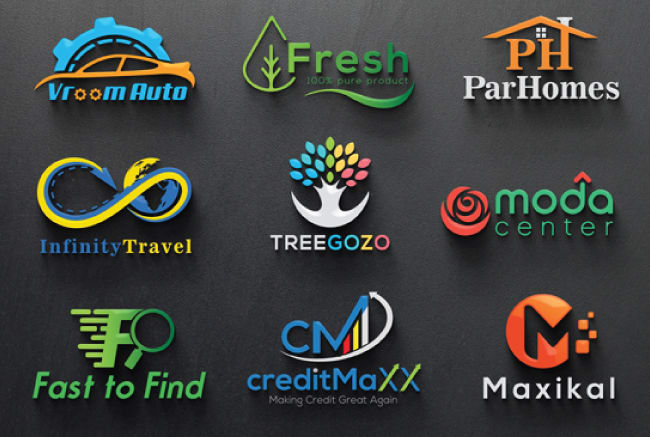In the ever-evolving landscape of branding and marketing, the logo stands as the cornerstone of a company’s identity. It’s the visual representation that communicates the essence of a brand to its audience. With the advent of technology and the rise of digital media, the demand for more dynamic and captivating logos has increased. Among the myriad of design options available, 3D logos have emerged as a compelling choice for brands looking to make a lasting impression. In this article, we’ll delve into the world of 3D logos, exploring their impact, versatility, and the process behind their creation.
1. Understanding the Essence of 3D Logos
At its core, a 3D logo is a three-dimensional representation of a brand’s identity. Unlike traditional 2D logos, which are flat and static, 3D logos add depth, dimension, and realism to the design. By incorporating elements such as shadows, textures, and perspective, 3D logos create a sense of depth that captivates the viewer’s attention and enhances brand recognition.
2. The Impact of 3D Logos on Brand Identity
One of the key advantages of 3D logos is their ability to make a brand stand out in a crowded marketplace. In today’s digital age, where consumers are constantly bombarded with visual stimuli, a striking 3D logo can help a brand cut through the noise and leave a memorable impression. The depth and realism of a 3D logo create a sense of professionalism and sophistication, instilling trust and credibility in the minds of consumers.
Moreover, 3D logos are highly versatile and can be adapted to various mediums and platforms. Whether displayed on a website, printed on packaging, or animated in a video advertisement, a well-executed 3D logo maintains its visual impact and reinforces brand identity across different channels.
3. The Process of Creating a 3D Logo
Creating a 3D logo requires a combination of artistic skill, technical expertise, and creative vision. The process typically begins with conceptualization, where designers brainstorm ideas and sketches to capture the essence of the brand. Once a concept is approved, the design moves into the digital realm, where specialized software such as Adobe Illustrator, Photoshop, or Blender is used to create the 3D model.
The next step involves adding depth, texture, and lighting to the design to enhance its realism. This often requires the use of advanced rendering techniques to achieve lifelike effects. Finally, the 3D logo is refined and polished until it accurately represents the brand’s identity and resonates with its target audience.
4. Examples of Successful 3D Logos
Numerous brands across various industries have successfully leveraged the power of 3D logos to enhance their brand identity and engage their audience. One notable example is the iconic logo of Nike, which features a three-dimensional swoosh symbol that conveys motion and athleticism. Another example is the logo of Pixar Animation Studios, which incorporates playful 3D lettering to reflect the company’s creativity and innovation in the world of animation.
5. The Future of 3D Logos
As technology continues to evolve, the possibilities for 3D logos are virtually limitless. With advancements in virtual reality (VR) and augmented reality (AR), brands can create immersive experiences that bring their logos to life in ways previously unimaginable. Whether through interactive digital installations, holographic displays, or AR-enabled mobile apps, 3D logos have the potential to redefine the way brands connect with their audience in the digital age.
In conclusion, 3D logos represent a powerful tool for brands seeking to elevate their identity and stand out in a competitive market. With their ability to add depth, dimension, and realism to a design, 3D logos captivate audiences and reinforce brand recognition across various platforms. As technology continues to advance, the future of 3D logos promises even greater opportunities for creativity and innovation in the world of branding and marketing.
